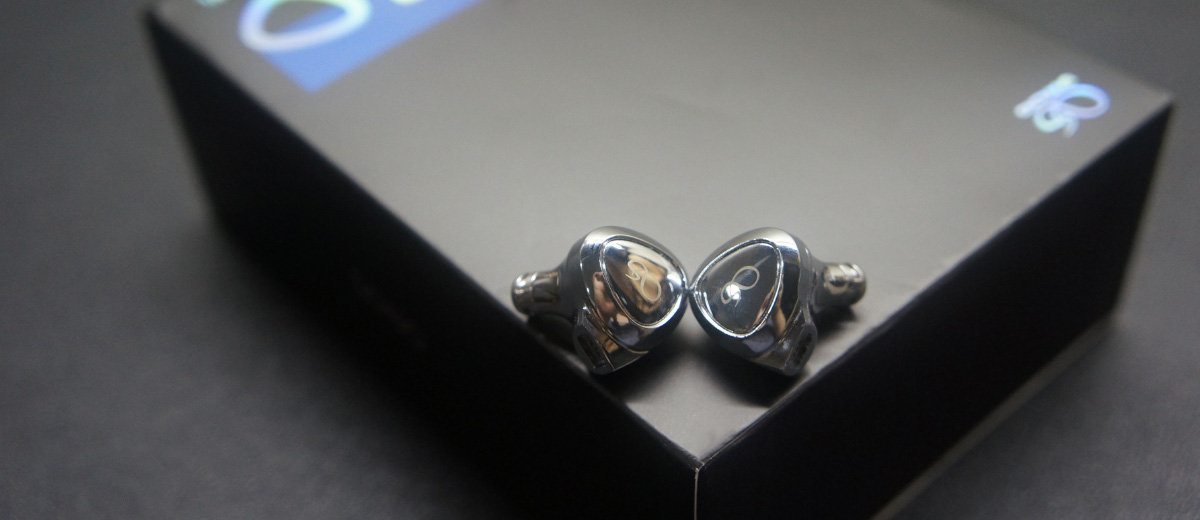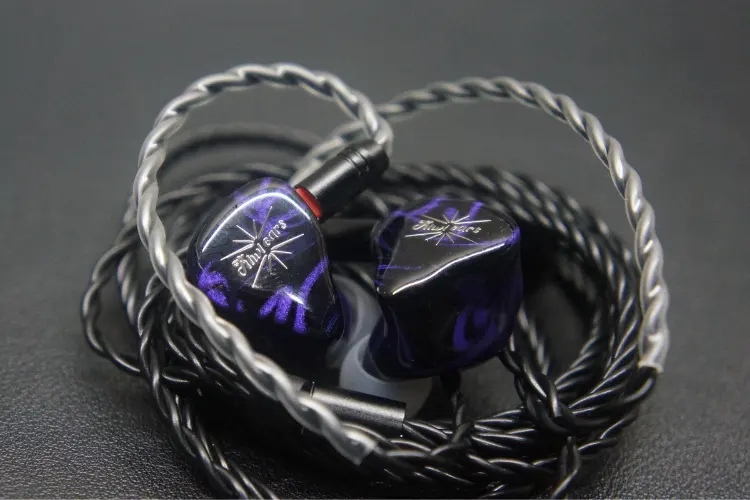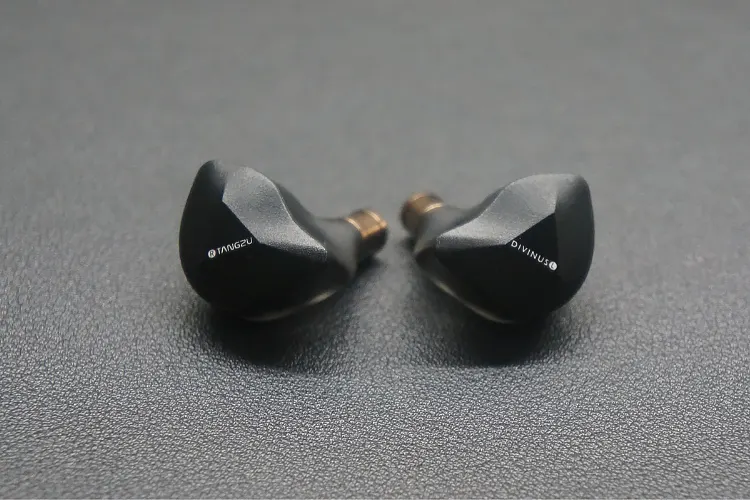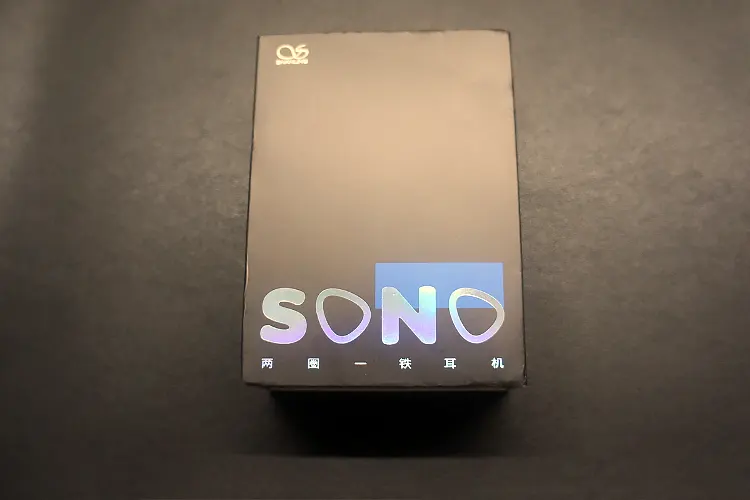Synergy
The Shanling SONO is easy to drive, thanks to its low impedance of 16Ω and high sensitivity of 103±3dB @1kHz. The earphone can be powered by most devices without the need for an external amplifier.
However, the earphone can benefit from a good source that can provide a clean and powerful sound signal.
In my experience, dongles such as the 7hz SEVENHERTZ 71 or the ddHiFi TC35 were able to maximize the SONO and I did not hear any noticeable improvements when trying them out on a desktop amplifier such as the Topping L30 II.
In my testing, I found that the SONO paired best with the TC35 by ddHiFi in terms of musicality and day-to-day usability. The TC35 did not add any coloration to the sound, and instead just improved the already good resolution performance of the IEMs.
Select Comparisons
Kiwi Ears Quartet
Technical
The Quartet uses dual 10mm dynamic drivers and dual balanced armature drivers with an impedance of 32Ω and a sensitivity of 110 dB @1kHz.
The SONO uses 2 dynamic drivers in a coaxial configuration and a custom-made BA for the upper frequencies. It also has an impedance of 16Ω and a sensitivity of 103±3dB @1kHz. This makes the Shanling IEM easier to drive on paper.
Additionally, both IEMs make use of the standard 0.78mm 2-pin connector, however, Shanling makes use of a shrouded connector.
Design
The Quartet makes use of a smooth resin shell with a swirled black and purple design with a glossy finish, whilst the SONO makes use of a premium feeling polished zin alloy shell.
The SONO fits better in the ear due to its smaller size, making it slightly more comfortable all around and perfect for all-day listening. However, this does not mean that the Quartet is uncomfortable by any means.
Performance
The Quartet has a V-shaped sound signature that leans more toward the warm side, whilst the SONO has a V-shaped signature that leans quite bright.
In terms of bass quantity, the Quartet’s execution is more evident. Bass hits have more rumble, whilst also adding more warmth to the overall tonality of tracks. I found bass guitar strums more relaxing and thicker with the Quartet, and a bit more energetic with less note weight on the SONO.
I found that male vocals sounded fuller and more bodied with the Quartet, whilst female vocals sounded more energetic and sparkly on the SONO. The mid instruments sounded more laid back and relaxing on the Quartet, but they were also more energetic and better resolving on the SONO.
I would say the mids would be a tie between the two IEMs. They are both drastically different, but I could see listeners picking one or the other strictly based on their preferences.
The highs on the SONO are more resolving than that of the Quartet. Cymbals and snares have a better sense of sparkle and air but do not come off as sibilant at all.
The comparatively veiled presentation of the Quartet makes it so that the Shanling IEM simply outclasses the Quartet in terms of top-end detail retrieval and gives it comparatively more energy.
TANGZU X DIVINUS FUDU verse1
Technical
Both IEMs make use of 2 dynamic drivers and a single BA configuration with similar impedance and sensitivity specifications as well. The FUDU has an impedance of 16Ω and a sensitivity of 106dB @1kHz, whilst the SONO has an impedance of 16Ω and a sensitivity of 103±3dB @1kHz, making the FUDU slightly easier to drive.
Design
The SONO makes use of a fully polished zinc alloy shell, whilst the FUDU makes use of a 3D-printed resin shell with a dark transparent color that has a matte finish. The FUDU also makes use of a CNC metal faceplate whilst the SONO’s faceplate is made of zinc alloy as well.
I found that the FUDU fits better in the ear due to its slightly smaller size and the superior DIVINUS tips that come with it. This doesn’t mean that the SONO is uncomfortable, it’s just hard to beat the smaller FUDU with a boutique $35 pair of ear tips.
Performance
The FUDU has a neutral warm-leaning sound signature, whilst the SONO has a V-shaped signature that leans quite bright.
The FUDU has a stronger and deeper bass performance however the SONO’s bass performance is slightly better textured. Bass guitar strums and bass drum hits are much more satisfying on the FUDU, and this feeling of warmth extends into the mid-range as well.
I wouldn’t say that the FUDU’s bass performance is better across the board, it would just depend on your preference for a warm tonality versus a more controlled but detailed bass response.
Our Verdict
The Shanling SONO is a very well-built, energetic, treble-leaning V-shaped pair of IEMs that do a good job with detail retrieval and imaging but may not be relaxing or musical enough for some listeners. It is by no means bright or fatiguing, but I would not consider this a pair of IEMs I would use in bed.
The inclusion of user-switchable tuning nozzles is a novel concept that I want other manufacturers to explore, however, for my preference, I used the black filters almost exclusively.
At the price point, the SONO is a leader in terms of resolution, imaging performance, and energy. If you’re in the market for a pair of IEMs under $100 and this sound signature sounds like something you’d be interested in, I can give this a solid recommendation.
Shanling SONO Specifications
- Driver Type: Hybrid 2 dynamic drivers and 1 balanced armature
- Plug: 3.5mm Single Ended
- Frequency Response: 16Hz – 20kHz
- Impedance: 16Ω
- Sensitivity: 103±3dB








